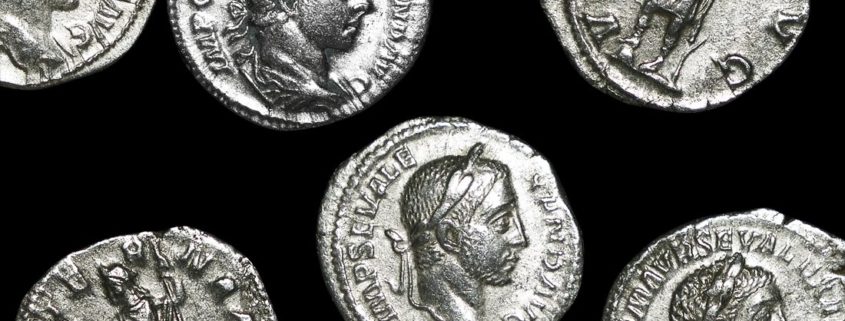Severus Alexander and the Roman Age of Chaos
The Last of the Severan Dynasty
On October 1, AD 208, future Roman emperor Severus Alexander was born. At the time, the empire was enjoying a period of stability under the founder of the Severan Dynasty, Septimius Severus, and his wife Julia Domna. But as Sev Alex grew up, the situation would change dramatically. Caracalla, Septimius’ and Domna’s eldest son, murdered his younger brother so as to avoid sharing the throne with him. As bloody-minded as Caracalla was, he was still a better emperor than his own successor, his maternal relation Elagabalus. Elagabalus has been infamous for millennia for his poor behavior and utter disregard for his own job as emperor.
As the empire slipped toward instability, Julia Maesa, elder sister of Julia Domna, hastily arranged for Severus Alexander to take the throne by murdering his unpopular cousin Elagabalus. Sev Alex was just 14. It should be noted that both Elagabalus and Severus Alexander were her grandchildren. A quick look at this family tree might help.
No one expected what followed: several years of domestic prosperity. Under his mother’s guidance, Severus Alexander encouraged the arts, reorganized the senate, and dramatically decreased imperial court spending after Elagabalus’ notoriously hedonistic reign. He followed more in the footsteps of Caracalla, known for his monetary reforms (we can thank him for the antoninianus!) and granting citizenship to everyone in the empire, than Septimius Severus, who was a military man in the old style of Rome. Perhaps more interesting to numismatists, Sev Alex carefully managed the coinage of the empire. He eliminated Caracalla’s antoninianus and making minute changes to the silver content of the denarius while keeping the overall value constant. This resulted in the last stable economy Rome would see for decades.
The Age of Chaos
Unfortunately the young emperor was simply not up to snuff when it came to military matters. Multiple historians of the time note that discipline in the Roman army was the worst it had ever been. His disgruntled soldiers finally killed him and his mother when they attempted to bribe several Germanic enemies instead of just killing them like proper Romans would. That ushered in the Third Century Crisis, also known as the Roman Age of Chaos: fifty years of near-anarchy in what had been the most powerful empire on Earth.
The military, fragmented as it was, became a major political player, declaring new emperors left and right. Claimants to the imperial throne were lucky if they survived more than a few years after taking the purple. Almost all of them died violently–only two were done in by plague instead of swords. On the fringes of the empire, unhappy provinces took their chances at freedom, creating the Gallic, Palmyrene, and other “breakaway empires.”
Coinage, unsurprisingly, suffered. Silver coinage became so debased it was basically just silver-washed. The denarius, the backbone of the empire’s economy for so long, was quietly and permanently retired. Usurpers issued their own coinage, breaking up the centralized monetary system. And artistry slowly slipped away.
What does this mean for the numismatist?
The Age of Chaos, while it must have been terrible to live through, offers the numismatist an opportunity. For the first time in some two hundred years, the coinage of Rome dramatically changes. Spiked crowns on barbarian emperors. Silver, silver wash, and bronze coinage are all easy to collect, side by side. Not only that, but there are dozens of emperors to collect, some straightforward and some incredibly rare.
ECC offers an incredible selection of coins from this time period. From Severan Dynasty coins of Sep Sev, Caracalla, Elagabalus, and most of the Julias, to of course coins of Severus Alexander himself. And that, of course, is before you even get to the Age of Chaos!



